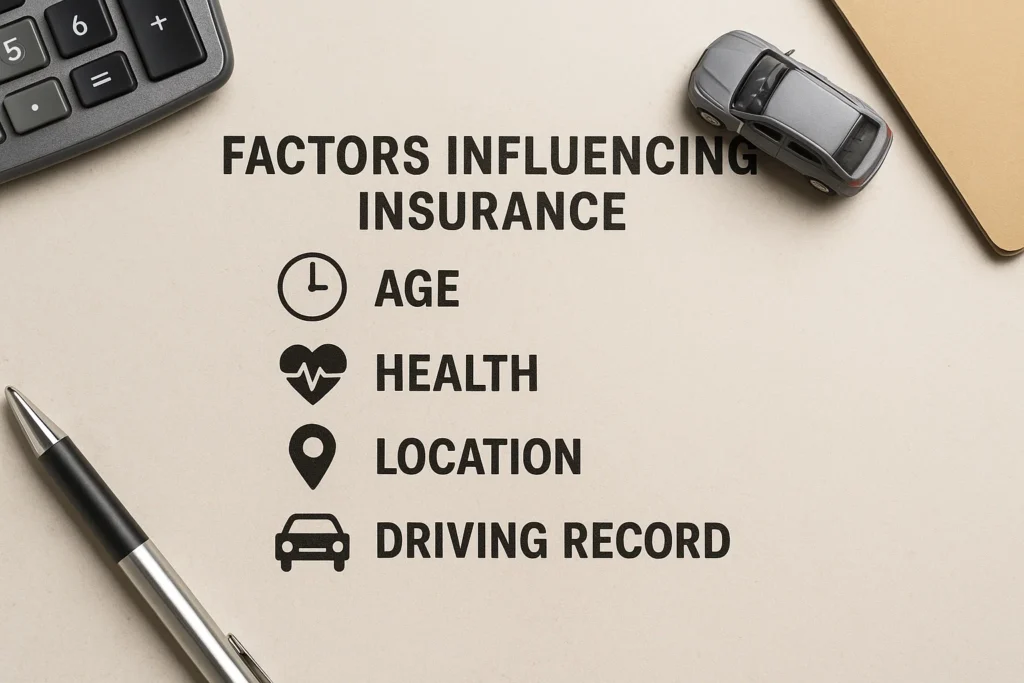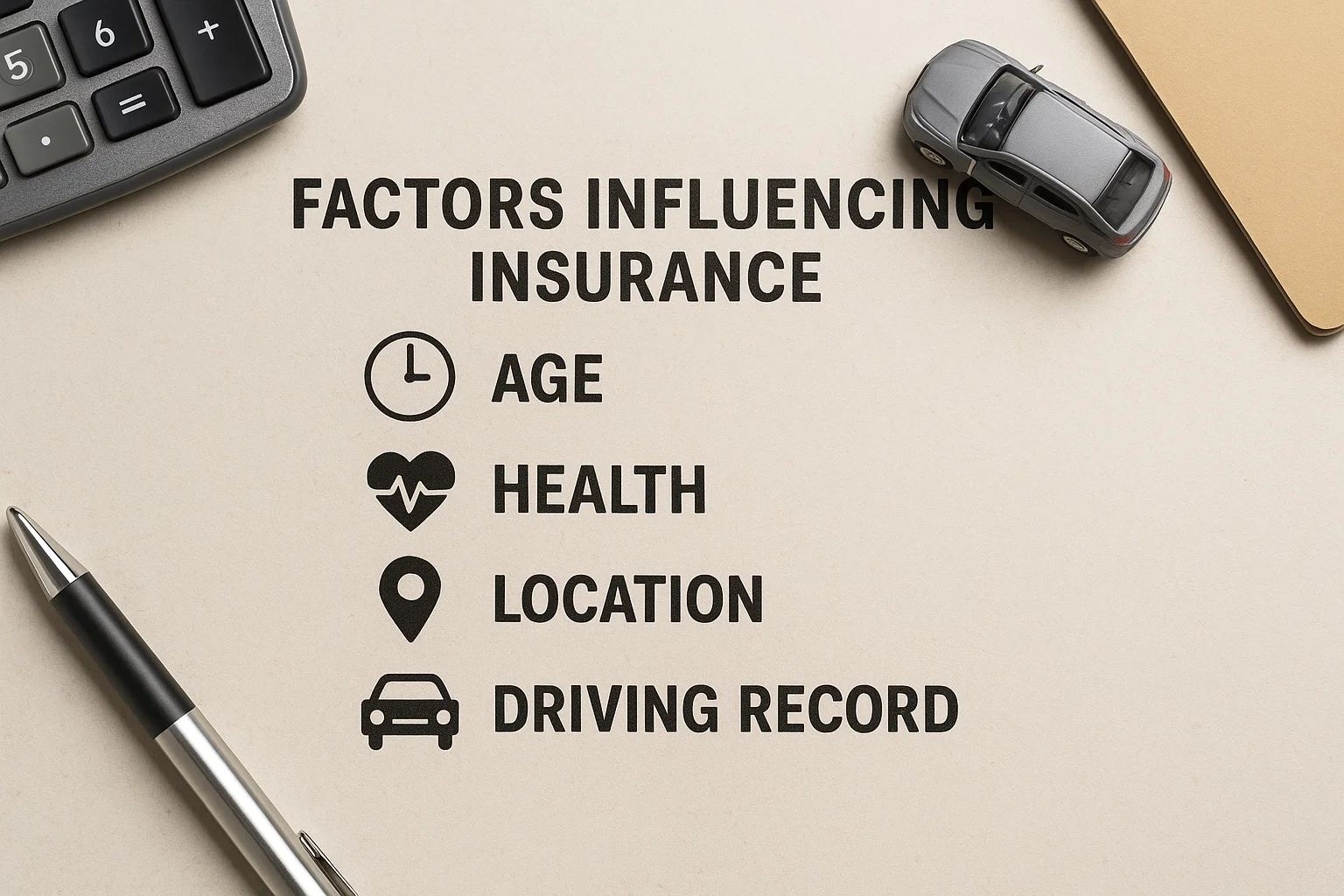
Mapping the Risk Terrain: Unveiling the Key Factors That Shape Insurance Needs
In an increasingly complex world marked by economic fluctuations, technological advancements, global pandemics, and climate volatility, the concept of security has become more dynamic than ever. Insurance has long stood as a financial safeguard against unforeseen losses, but the determinants shaping insurance needs today go far beyond basic coverage for accidents, theft, or illness. From individual lifestyle changes to business expansion risks and from environmental threats to regulatory requirements, various interconnected factors now influence how people and organizations perceive and purchase insurance. Understanding these factors is crucial for making informed decisions in risk management.
This article delves into the multifaceted variables that shape insurance needs in today’s world, analyzing personal, societal, environmental, economic, and technological influences. The aim is to offer clarity and insight to individuals, families, and businesses evaluating their risk exposure and coverage requirements.
Demographic Characteristics
Demographics significantly influence insurance needs. Age, gender, marital status, income level, family size, and occupation all play pivotal roles in determining what types of insurance a person might need.
- Age and Life Stage: Younger individuals might prioritize health or car insurance, while older adults may focus on life, long-term care, or retirement-related products like annuities and longevity insurance.
- Income and Lifestyle: High-income earners may seek premium insurance solutions such as umbrella liability, property insurance for luxury items, or estate planning insurance, whereas low-income individuals may require affordable microinsurance options.
- Family Structure: Married individuals or those with dependents typically need life insurance and family health plans to secure financial stability in case of death or medical emergencies.
Health and Lifestyle Factors
Health status and lifestyle choices directly impact both the cost and necessity of certain insurance types. Insurers assess these risks when underwriting policies.
- Pre-existing Medical Conditions: Individuals with chronic diseases may face higher premiums or limited coverage options for health and life insurance.
- Tobacco and Alcohol Use: Riskier lifestyle behaviors lead to increased premiums, particularly in life, critical illness, and health insurance sectors.
- Fitness and Preventive Care: On the flip side, insurers increasingly offer wellness incentives and discounts to individuals who maintain healthy lifestyles.
Employment and Occupational Risk
A person’s job significantly influences insurance needs. High-risk occupations such as construction, mining, or chemical handling necessitate specialized coverage.
- Occupational Hazards: Workers in physically demanding or hazardous environments often need disability insurance, workers’ compensation, or specialized health plans.
- Self-employment: Entrepreneurs and freelancers need business interruption, liability, and sometimes income protection insurance.
- Corporate Benefits: For salaried employees, the coverage offered by employers (e.g., group health or life insurance) can impact the type of supplementary policies one might purchase individually.
Asset Ownership and Liability Exposure
The value and nature of owned assets determine the need for property and liability insurance.
- Real Estate and Vehicles: Property owners require homeowners insurance, and vehicle owners must carry at least minimum mandated auto insurance.
- Luxury Assets: Ownership of high-value items like jewelry, art, or yachts may require specialized high-value property coverage.
- Business Assets: Business owners often need commercial property, inventory, and cyber liability insurance depending on their operations.
Geographical and Environmental Considerations
Location plays a critical role in shaping insurance needs due to environmental, political, and social factors.
- Natural Disasters: Residents in disaster-prone areas—like earthquake zones, floodplains, or hurricane belts—may require additional or specialized coverage such as flood insurance or earthquake insurance.
- Urban vs. Rural Settings: City dwellers may need more robust theft or liability coverage, while rural homeowners might prioritize agricultural or crop insurance.
- Local Regulations: Laws can mandate certain types of coverage, affecting both personal and business insurance decisions.
Economic and Financial Stability
An individual’s or business’s financial situation strongly dictates both the ability to afford insurance and the types of insurance deemed necessary.
- Income Volatility: Those with fluctuating or unstable income might seek income protection or unemployment insurance.
- Debt and Liabilities: Individuals with significant debt might prioritize life insurance to prevent burdening dependents, while businesses might use key person insurance to protect against revenue loss.
- Investment and Wealth Management: Wealthier individuals often integrate insurance with estate planning and investment strategies.
Technological Advancements and Digital Risks
The digital era has brought about new forms of risk and, in turn, new insurance needs.
- Cybersecurity Threats: Individuals and businesses increasingly require cyber insurance to protect against data breaches, identity theft, and ransomware.
- Telematics and Wearables: Insurance companies use data from fitness trackers and car sensors to offer usage-based policies, which can affect premium rates and plan structures.
- Remote Work and Digital Nomadism: The rise of remote work has altered workplace insurance needs, prompting a demand for portable health and liability coverage.
Government Policy and Legal Requirements
Many types of insurance are legally mandated or strongly incentivized through public policy.
- Mandatory Coverage: Car insurance, employer-provided health coverage, or building insurance in certain jurisdictions are often required by law.
- Subsidized Programs: Government-subsidized insurance programs—like Medicaid, Medicare, or agricultural insurance—alter private market needs.
- Compliance Risk: Businesses must navigate regulatory landscapes, necessitating directors and officers liability insurance, professional indemnity, or workers’ compensation.
Cultural and Social Influences
Cultural values and societal norms can impact attitudes toward risk and the perceived necessity of insurance.
- Risk Aversion: In some cultures, there’s a stronger inclination toward saving and insuring against future uncertainty, whereas others may rely more on community or familial support.
- Trust in Institutions: Low trust in insurance providers or financial systems can discourage uptake, while high trust encourages diversification of coverage.
- Religious Beliefs: Certain religious principles might restrict or guide insurance choices, such as the avoidance of interest-based policies or preference for takaful (Islamic insurance).
Past Experiences and Perceived Risk
A person’s or organization’s history with loss, accidents, or disasters deeply affects insurance behavior.
- Claims History: Individuals or businesses that have experienced significant losses often become more proactive in securing coverage.
- Risk Perception: Even without direct experience, awareness of common risks—such as data theft or pandemics—can motivate insurance purchases.
- Media and Social Influence: High-profile news coverage of disasters or fraud can influence public interest in certain insurance types, from travel insurance to business continuity policies.
Life Transitions and Milestones
Key life events and transitions often act as triggers for revisiting or acquiring insurance.
- Marriage or Divorce: These events may change life insurance beneficiaries or alter health coverage plans.
- Childbirth: Parents often purchase or increase life insurance to protect dependents.
- Home Purchase: Buying property typically prompts the need for homeowners and mortgage protection insurance.
- Retirement: Retirees may adjust their portfolio, shedding income protection insurance but increasing focus on health, long-term care, or annuity products.
Global Crises and Emerging Risks
Events such as pandemics, geopolitical instability, and global warming introduce broad and evolving threats.
- Pandemics: COVID-19, for example, increased demand for travel, health, and life insurance, and exposed gaps in business interruption coverage.
- Climate Change: Rising global temperatures and more frequent natural disasters are leading to heightened awareness and adjustments in environmental risk insurance.
- War and Civil Unrest: These conditions elevate the demand for political risk and terrorism insurance, particularly for multinational firms and expatriates.
Insurance is no longer a simple transaction—it is a nuanced decision shaped by a wide spectrum of personal, social, and environmental factors. Understanding what influences insurance needs helps individuals and organizations select the right coverage, manage premiums effectively, and prepare for the unpredictable.
As new challenges and innovations continue to emerge, from artificial intelligence to climate resilience, the insurance landscape will evolve accordingly. Awareness of the many dimensions influencing insurance needs not only empowers consumers but also drives insurers to develop more responsive, inclusive, and adaptive products. In this interconnected world, the right insurance strategy can mean the difference between vulnerability and resilience.
